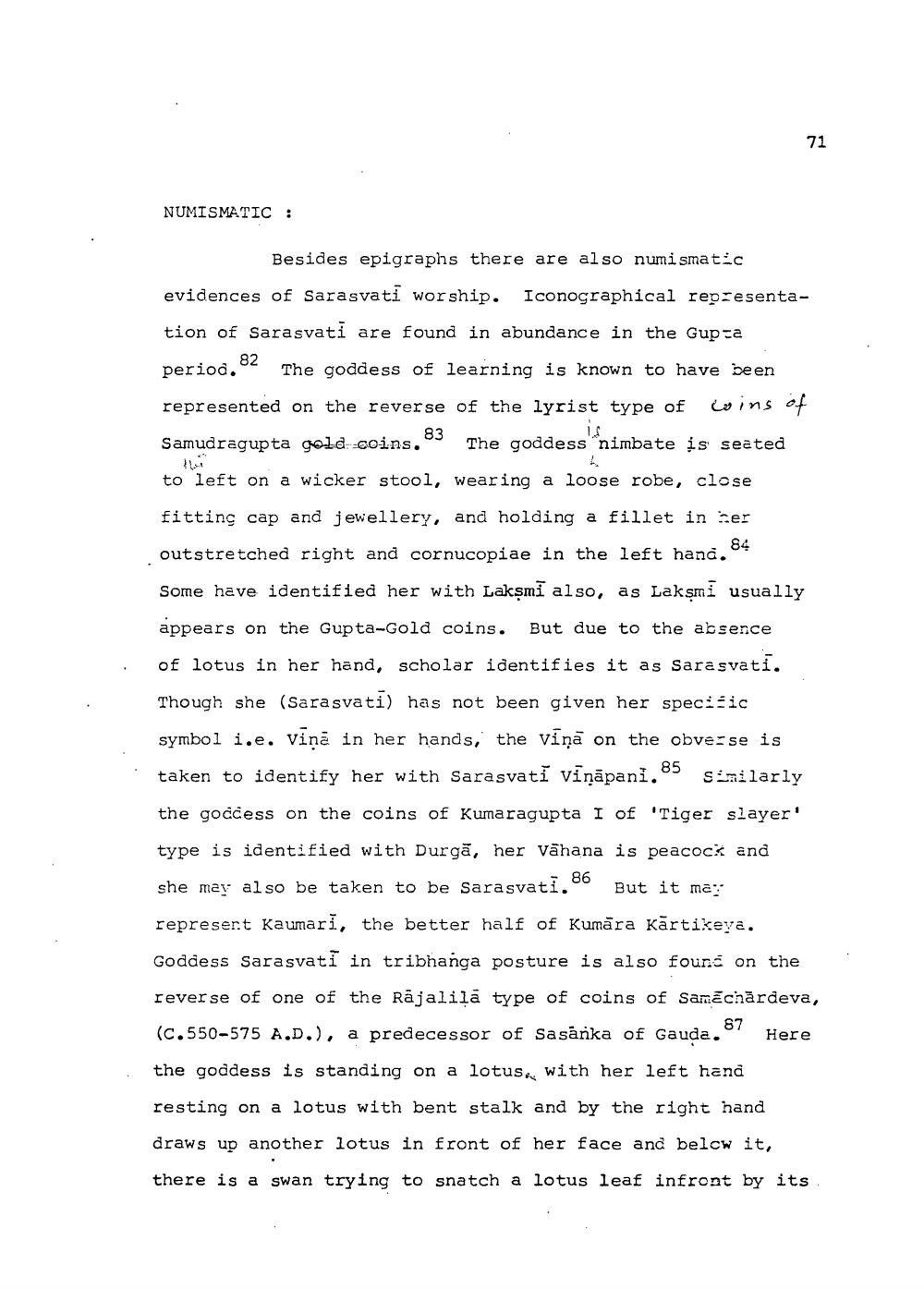________________
72
NUMISMATIC :
Besides epigraphs there are also numismatic
evidences of Sarasvati worship. Iconographical representation of Sarasvati are found in abundance in the Gupca period.82 The goddess of learning is known to have been represented on the reverse of the lyrist type of coins of Samudragupta gold coins. 83 The goddess-nimbate is seated
1
to left on a wicker stool, wearing a loose robe, close
fitting cap and jewellery, and holding a fillet in ser outstretched right and cornucopiae in the left hana. 84 Some have identified her with Lakşmi also, as Lakşmi usually appears on the Gupta-Gold coins. But due to the absence of lotus in her hand, scholar identifies it as Sarasvati. Though she (Sarasvati) has not been given her specicic symbol i.e. Vina in her hands, the viņā on the obve-se is taken to identify her with Sarasvatī viņāpani.85 similarly the goccess on the coins of Kumaragupta I of 'Tiger slayer' type is identified with Durgā, her vāhana is peacock and she may also be taken to be Sarasvati." But it ma: represert Kaumari, the better half of Kumāra Kārtikeya. Goddess Sarasvati in tribhanga posture is also founs on the reverse of one of the Rājalilā type of coins of Sanzchārdeva, (c.550-575 A.D.), a predecessor of Sasanka of Gauda. Here the goddess is standing on a lotus. with her left hand resting on a lotus with bent stalk and by the right hand
draws up another lotus in front of her face and below it,
there is a swan trying to snatch a lotus leaf infront by its




